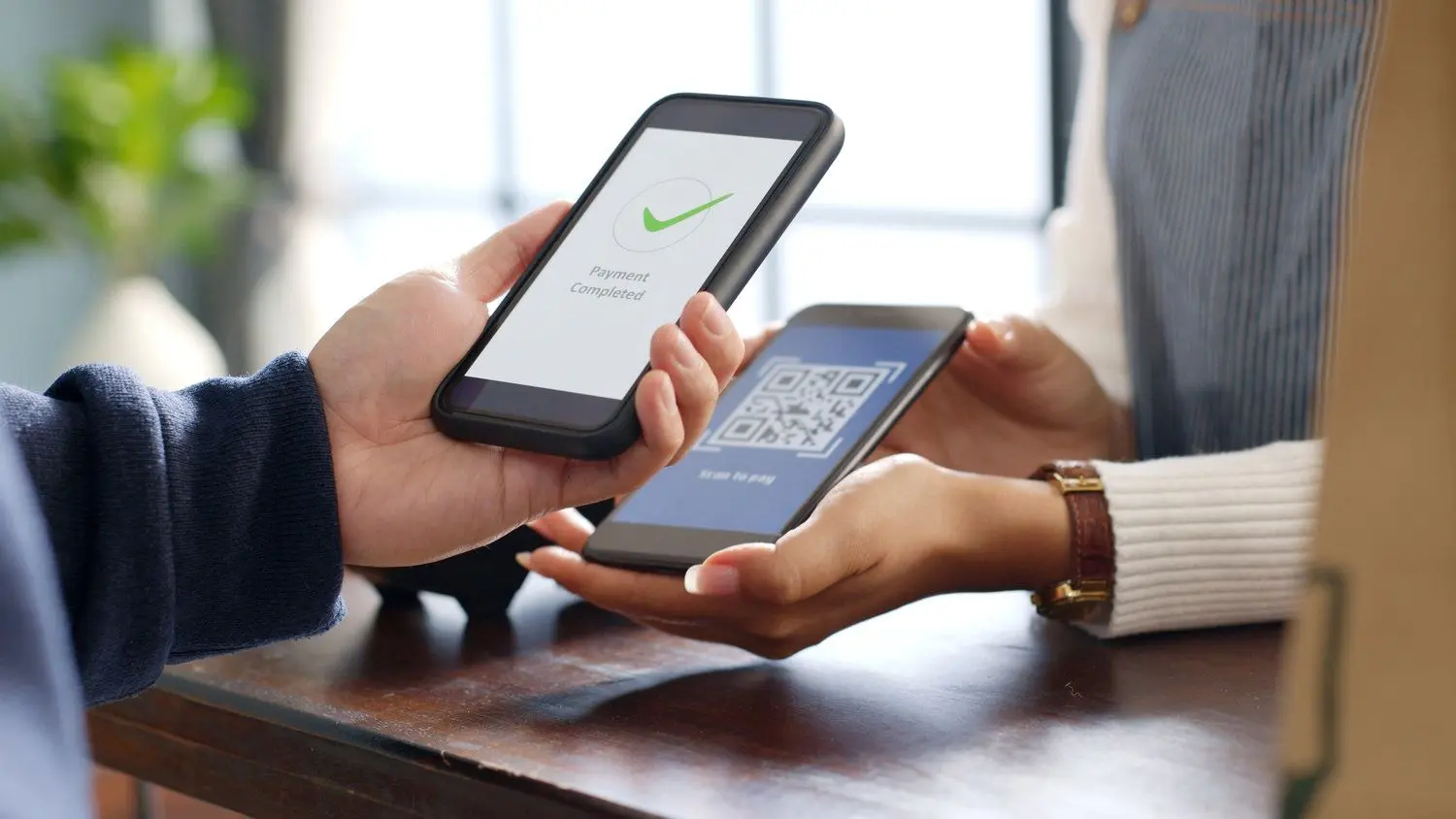Revolut is implementing Bitcoin Lightning Network technology across its platforms in the UK and European Economic Area. The integration aims to reduce transaction times and network fees for Bitcoin payments. And that is supposed to make cryptocurrency more practical for everyday use. Revolut’s decision is a sign of a wide scale Bitcoin Layer 2 adoption that could change the crypto landscape in the near future.
What to Know
- The Lightning Network is a Layer‑2 protocol on Bitcoin for high‐speed, low‐fee payments, aimed at solving Bitcoin’s scalability limits.
- Five key 2025 use cases include cross‐border remittances, Lightning in fintech apps (e.g. Revolut’s crypto transfers), everyday retail and merchant transactions, micropayments for digital content, and IoT/machine payments.
- Lightning’s design uses off‐chain payment channels and multi‐hop routing with Bitcoin itself (no new token), while alternatives like Stacks (smart contracts on BTC), Liquid (federated sidechain), and Fedimint (privacy‐focused federated mint) offer different trade‐offs in trust, features and use cases.
- Analysts (including the U.S. Federal Reserve) note Lightning is reducing base‐layer congestion and fees, moving Bitcoin closer to a true peer‐to‐peer cash system. Competition from other Layer‑2s spurs innovation, but Lightning remains the backbone for Bitcoin payments.

What is Lightning Network
The Lightning Network is a breakthrough payments protocol built atop the Bitcoin blockchain to enable near‑instant, tiny transactions without clogging the main chain. By opening peer‑to‑peer channels between users, Lightning lets parties transact off‑chain and settle only the final balances on Bitcoin’s blockchain. In effect, Lightning is the “payment rails” layer that Satoshi Nakamoto envisioned for Bitcoin – fast, cheap and decentralized. As Reuters observes, recent Lightning adoption has helped steer Bitcoin towards its original goal as “a peer‑to‑peer electronic cash system,” with the total bitcoin held in Lightning channels surging to record highs.
In late 2024 the network’s capacity stood above 5,300 BTC (≈$200m), up almost 10% from a year prior. Major crypto exchanges now support Lightning payments, and tech firms tout subsecond settlement times and near‑zero fees on the network. This growing infrastructure suggests Bitcoin is finally bridging the gap to everyday retail money.
Lightning’s appeal is rooted in addressing Bitcoin’s familiar scaling challenges. Bitcoin’s base layer handles only ~7 transactions per second with 10‑minute block times, making on‑chain payments slow and expensive during congestion. Lightning sidesteps this by grouping many transfers off‑chain: two parties open a payment channel by locking funds in a 2‑of‑2 multisig address, then exchange unlimited off‑chain updates between them.
Only the opening and closing transactions hit the blockchain. This off‑chain ledger is secured by Bitcoin itself: either party can unilaterally close the channel at any time, broadcasting the latest state on‑chain. In practical terms, it’s like running a bar tab with your friend: you keep settling up off‑ledger until you’re done, and only the final tab is paid on the Bitcoin chain. This dramatically slashes time and cost. For example, Santander’s analysis notes Lightning can support millions of instantaneous micropayments per second and eliminate confirmation delays – essential to pay for a $5 coffee in real time.
Beyond one‑to‑one channels, Lightning forms a global network via multi‑hop routing. Any user can send payments to non‑counterparties by finding a path of channels. Funds “hop” through intermediary nodes’ channels, each hop enforced by hashed timelock contracts so that either the entire payment succeeds or nothing moves. In practice a Lightning wallet silently splits or routes your payment across up to a few channels until it reaches the recipient.
While routing can fail without sufficient liquidity, Lightning’s capacity growth and new routing algorithms (like AMP) have greatly improved success rates. Importantly, Lightning uses only Bitcoin’s native currency; there is no new token. Fees accrue to channel operators for forwarding payments, but these micro‑fees are typically fractions of a cent or even waived for well‑connected nodes. Lightning thus operates as a yield‑bearing payment network: users earn tiny fees by routing other people’s Bitcoin without giving up custody of their funds. The result is a self‑organizing mesh of payment channels that preserves Bitcoin’s security while unlocking orders‑of‑magnitude faster throughput and lower cost.
For users, Lightning means instant peer‑to‑peer payments: transactions settle in milliseconds and fees can be effectively zero. The only on‑chain “fee” is the cost of funding channels, spread over many transactions.
Lightning’s security model relies on the fact that outdated channel states can be penalized, and watchtower services can protect users from cheating. The protocol also scales naturally with Bitcoin’s security, since channels can be closed on‑chain at any time. In sum, Lightning is a second‑layer state‑channel network that offloads most small payments from Bitcoin’s blockchain, solving its throughput bottleneck. Its limitations – need for channel liquidity, mostly bidirectional channels, etc. – are actively addressed by new research and software.
And even as Bitcoin’s price has slumped, Lightning’s on‑chain capacity has nearly doubled in the past year, reflecting real demand for its functionality.

Five Real World Use Cases of Lightning Network
Let’s take a look at some of the most impressive use cases of Lightning Network in contemporary world of crypto.
1. Cross‑Border Remittances: Cheap Global Money Transfer
A standout use of Lightning is instant remittances. Traditional cross‑border payments are slow and costly – often 5–10% per transaction. Lightning makes remittance nearly free and immediate.
For example, fintech firm Strike expanded its “Send Globally” service to the Philippines and Mexico, two of the world’s largest remittance corridors.
Clients in the U.S. can send dollars through Strike; on the Lightning layer they convert to BTC, hop across the network in seconds, and emerge as pesos or pesos’ stablecoins in the recipient’s mobile wallet (all at a tiny fraction of usual fees).
Strike explicitly leverages Lightning to outcompete legacy rails: users enjoy near‑instant delivery and sub‑1% total cost, versus the 3–5% typical bank or cash‑agent fee. Lightning’s low latency also helps hedge vs. crypto volatility: funds clear faster than price can swing.
This corporate remittance use case operates on a scale.
As of 2025 Strike’s Send Globally handled millions in annual flows, with local partners facilitating on/off ramps for fiat.
Other companies have followed suit – for instance, exchangers like Coins.ph in the Philippines have plugged into Lightning rails. Importantly, Lightning’s micropayment nature means senders can use tiny amounts of BTC (satoshis) to fill remittance corridors efficiently. Because Lightning is peer‑to‑peer, new routes can be established globally without waiting for banking hours or permission. The result is remittances delivered in seconds for cents of fee. Regulators and nonprofits are taking note: the Lightning bridge can bring financial inclusion to developing countries, reducing reliance on cash and legacy money transfer operators.
2. Fintech & Digital Wallets: Lightning in Everyday Apps
Major fintech apps have begun embedding Lightning to supercharge user payments. In May 2025, European digital bank Revolut announced (via Lightspark infrastructure) Lightning support for its UK and EU customers. The bank CEO explained that Lightning integration will let customers send or spend BTC “under 1 second and 1 cent” – far faster and cheaper than the older crypto rails.
By tapping Lightspark’s node network, Revolut users can pay merchants or peers in Bitcoin instantly. This move mirrors similar integrations: some crypto exchanges (e.g. Kraken, Bitfinex) added Lightning deposit and withdrawal support, speeding up transfers between accounts and wallets.
On the consumer side, Lightning also powers new payment apps.
For example, mobile wallets like Wallet of Satoshi and Breez allow users to buy coffee, pay for a taxi, or split bills with Lightning “scan-to-pay”.
A few forward‑thinking merchants (especially in crypto‑friendly countries) have Lightning POS terminals installed.
In one grassroots example, a Salvadoran cafe chain cooperates with Bitcoin Beach (a civic project) to accept Bitcoin over Lightning, sharing tips via micropayment channels. Such real-world adoption has been modest but growing: a recent analysis notes strong Lightning uptake in Central America and parts of Europe, where everyday vendors appreciate the frictionless Bitcoin payments.
Even charity and gig workers can benefit – Lightning enables recurring subscriptions or streaming tips of a few cents at a time, which was prohibitively expensive on‑chain.
Lightning’s advantage in fintech is clear: payments that in traditional crypto would take minutes and dollars in fees now clear almost instantly with no middleman. Peer‑to‑peer transfers (like Cash App’s Lightning feature) go at the speed of apps, enabling Bitcoin to function as “digital cash” in wallets. This improves the everyday utility of Bitcoin.
Fintech platforms also capitalize on Lightning’s non‑custodial nature: users send from their own wallets over Lightning rather than trusting a centralized ledger. The net effect is an embedded Lightning network beneath apps – a trend analysts see as critical for broader Bitcoin adoption.
3. Retail and Point‑of‑Sale Payments
As Lightning matures, larger retailers have begun to experiment with it for checkout. During Bitcoin’s 2024 bull run a few forward‑looking merchants ran Lightning payment pilots: reports noted household names like Starbucks and Walmart (in press rumors) exploring Lightning options for customer payments.
More concretely, crypto specialist BitPay saw record volumes of Lightning transactions, indicating merchants’ interest in Bitcoin at the point of sale. For micro‑merchants and e‑commerce, Lightning is particularly compelling: an online retailer can accept thousands of $5 payments with negligible fees, unlike on‑chain where fees would exceed ticket price.
One high-profile retail use is digital gift cards. Companies like Bitrefill and CoinCards let customers buy vouchers or phone top‑ups with Bitcoin, and these services now preferentially use Lightning rails for micropayments.
The Lightning‐based payment settles almost instantly with the merchant’s own channels, then the merchant (Bitrefill) delivers the product.
Another example is event ticketing: some conferences and festivals issue Lightning‑ready payment links or IDs so attendees can pay for merchandise and food with Bitcoin at kiosks. These use cases exploit Lightning’s offline payment extensions (users can prepare pre‑signed payment requests) and its sub‑cent fees on tiny purchases.
At a broader level, Lightning can turn local street vendors into micro‑Bitcoin merchants. Crypto advocacy groups in Latin America have been training merchants in mobile Lightning wallets. For instance, in Bolivia a cevichería owner began accepting Lightning through a smartphone POS; neighboring kiosks followed suit after seeing quick settlement. Although individual retailers’ volumes are small, together they form a grassroots network of Lightning lanes – a catalyst for community adoption.
Economically, this lowers barriers: shoppers no longer need to open big exchanges or pay high KYC fees to spend Bitcoin; they just use a Lightning QR code. While still niche, retail Lightning is growing quietly, especially in regions with currency instability where Bitcoin is seen as a reliable payments layer.
4. Micropayments for Content and Services
Perhaps the most natural use of Lightning is microtransactions on the internet.
Lightning makes it feasible to pay fractions of a cent per view, per article, or per API call. By 2025 a host of content platforms and social apps have built Lightning wallets into their products. For example, decentralized social networks and blogging sites (using protocols like Nostr or Lightning TipBots) allow users to tip each other instant satoshis for posts or comments. Listeners can “pour a bit of sats” into podcast feeds (Podcasts 2.0) each time they play a song or episode, funding creators directly.
This emerging ecosystem of Lightning micropayments is cited as a key growth driver for LN’s user base.
Another area is gaming and streaming services. Game developers have integrated Lightning to let players pay tiny amounts during play or bet on outcomes. For instance, certain mobile games allow in‑game assets to be bought in increments of 0.01 mBTC via Lightning, something impractical on‑chain.
Likewise, some video streaming platforms experiment with Lightning‑based pay‑per-second streaming – pausing playback when balance runs out, resuming as more sats flow. These use cases take direct advantage of Lightning’s few‐ms settlement, no mediation, and extremely low incremental fees. While still nascent, they show the peer‑to‑peer ethos of Bitcoin extending into digital services: content is monetized by countless small payments rather than subscriptions, and Lightning makes each transaction efficient.
5. IoT and Machine‑to‑Machine Payments
The Lightning Network also opens the door to autonomous machine payments in 2025. Any device with a Lightning wallet can settle payments in real time, enabling scenarios like paying for Wi‑Fi by the minute, or a smart appliance ordering supplies with micro‑purchases.
For example, telecom providers in some regions have trialed pay‑per-use data plans where customers top up a Lightning balance and the network meter deducts satoshis live. Another emerging sector is e‑mobility: certain EV charging stations accept Lightning, billing cars down to the last kilowatt-minute through tiny Bitcoin payments.
The general trend is toward enabling devices and sensors to transact without human intervention, thanks to Lightning’s programmability and speed.
From a grassroots perspective, Lightning machine payments are still early: pilot projects by startups (like Meshnet and IoTeX) suggest this future. But even non‑IoT examples count: Lightning-powered tipping jars and donation devices (physical pay‑to‑pour bitcoin water coolers!) have popped up at tech conferences. These hardware implementations showcase Lightning as a bridge between physical commerce and Bitcoin. In sum, Lightning allows Bitcoin to flow not just between people, but between machines – tapping into the next wave of the “Internet of Value.”

Other Bitcoin Layer‑2 Solutions in 2025
As Lightning climbs, other second‑layer schemes have matured alongside it. Each alternative has its own design trade‑offs. For example, Stacks (formerly Blockstack) is a smart‑contract platform built on Bitcoin. Unlike Lightning, Stacks is its own blockchain with a native token (STX) that uses Bitcoin only for settlement security via a “Proof of Transfer” consensus. Stacks adds Ethereum‑style programmability to the BTC ecosystem, enabling DeFi and NFT applications. It doesn’t scale Bitcoin’s payment throughput (Stacks transactions still take time), but it vastly broadens Bitcoin’s functionality. In effect, Stacks is complementary: Bitcoin users can pay on Lightning or, if they need a smart contract, route through Stacks (e.g. sending BTC into a Stacks contract).
A key difference is trust and liquidity: Lightning requires no new token and uses user‑funded channels, whereas Stacks requires STX and 60‑second microblocks to secure transactions.
The Liquid Network is another Layer‑2, but with a very different approach.
Developed by Blockstream, Liquid is a federated sidechain – meaning a consortium of known functionaries secures it. Liquid issues a Bitcoin‑pegged asset (L‑BTC) which users mint by locking real BTC.
Transactions confirm in about two minutes with fast finality, making it much faster than Bitcoin’s 10‑minute blocks. Liquid’s federation trades decentralization for performance: only ~15 nodes validate Liquid blocks, so it’s highly centralized compared to Lightning’s global mesh. In practice, Liquid is popular with exchanges and traders for quick transfers and asset issuance (eg. tokenized securities), rather than everyday payments.
Lightning vs Liquid is thus partly a matter of venue: Lightning excels at decentralized, user‑to‑user micropayments, while Liquid offers secure, fast settlement between institutions (fewer participants but higher throughput). They also compete for “off-chain” capacity: a trader might move funds on Liquid when speed is critical or use Lightning for retail payments. But mostly they complement each other in the Bitcoin ecosystem.
A newer entrant is Fedimint, a federated Bitcoin mint that emphasizes privacy.
A Fedimint federation acts as a collective custodian: users deposit BTC into the federation and receive private “tokens” via Chaumian e‑cash protocols. Lightning integrates with Fedimint through special gateways: a user can send sats to a Lightning address connected to the federation, instantly converting them into Fedimint tokens for spending.
This lets Bitcoiners ‘hop’ between Lightning and federations for added anonymity – Lightning’s payment speeds combine with Fedimint’s privacy model. The trade‑off is trust: unlike Lightning’s trustless channels, Fedimint requires trusting a quorum of nodes not to collude. But for many, giving up minimal trust in a large federation is worth the privacy gains. In 2025 some wallets let users switch on Fedimint spending to blur trail between transactions. Lightning and Fedimint thus coexist as layers: one speeds up payments, the other mixes them.
Other Layer‑2s include RSK (Rootstock), a 2017 Ethereum‑like sidechain, and experimental Bitcoin rollups.
Rollups (already huge on Ethereum) are being studied for Bitcoin too.
Researchers estimate that validity‑rollups on Bitcoin could eventually boost throughput ~100× by bundling transactions off‑chain and posting summaries on Bitcoin. Such rollups would operate in tandem with Lightning, further offloading the base layer. Meanwhile, platforms like ARK and new UTXO‑sharing protocols promise yet more scalability.
Each of these solutions offers a different mix of security, decentralization and features. Lightning is unique in being non‑custodial and purely Bitcoin‑native, whereas Stacks and RSK rely on external tokens and Liquid/Fedimint rely on federations. In 2025 analysts view them as complementary: Lightning remains the payments backbone, while Stacks/liquid/etc. target niches like smart contracts, asset issuance or privacy.
Taken together, the plethora of Layer‑2 projects is often described as a “modular Bitcoin” stack. No one layer suffices for all needs, but each extends Bitcoin’s reach. As Galaxy Digital observes, these L2 networks are attracting liquidity and developers, each building new applications around Bitcoin.
For end users, this means the Bitcoin ecosystem can evolve much like the internet did – with separate layers for cash, contracts, and privacy all interoperating. By 2025, the contrast is clear: Lightning powers fast, low‑fee payments in everyday scenarios, while Stacks powers DeFi/DApps, Liquid speeds up exchange‑grade settlements, and Fedimint offers private wallets. These layers sometimes compete (e.g. fee markets) but more often they complement each other, driving overall Bitcoin adoption in parallel.
Final Thoughts
Five years into its lifecycle, the Lightning Network is finally delivering on Bitcoin’s original vision as “electronic cash” – and financial analysts are taking note.
A Federal Reserve report found that Lightning adoption significantly reduces blockchain congestion and fees, estimating that if Lightning had existed in 2017, on‑chain congestion might have been up to 93% lower.
In practical terms, users are better off: their Bitcoin transactions now settle more quickly and cheaply. The Lightning layer has already attracted hundreds of thousands of active users and is becoming a critical piece of Bitcoin’s infrastructure.
Mainstream platforms like X tipping and major exchanges now support Lightning payments, signaling that the market values this rapid layer.
Looking forward, Lightning’s growth is likely to accelerate Bitcoin’s real‑world utility. Its ability to handle tiny payments and offline modes positions Bitcoin for use cases—from content streaming to IoT charging—that were unimaginable on‑chain.
Meanwhile, competition from other Layer‑2s ensures ongoing innovation. Protocols like Stacks, Liquid and Fedimint each carve out their roles, pushing improvements in areas like programmability and privacy. But all reinforce Bitcoin’s ecosystem by bringing new users and use cases. In 2025, it’s not just speculative demand keeping Bitcoin afloat – it’s emerging as a robust payments network.

